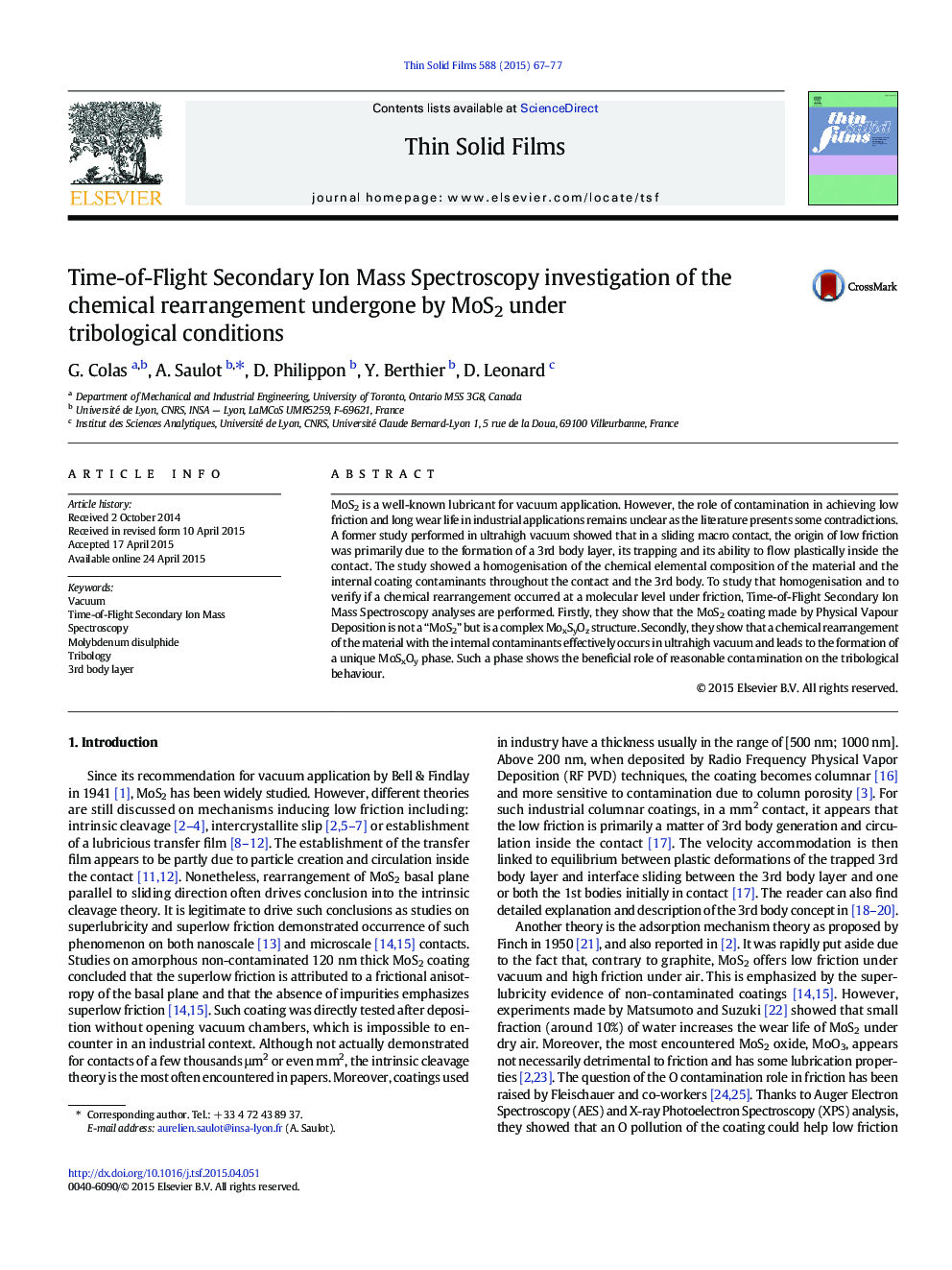| Article ID | Journal | Published Year | Pages | File Type |
|---|---|---|---|---|
| 1664740 | Thin Solid Films | 2015 | 11 Pages |
Abstract
MoS2 is a well-known lubricant for vacuum application. However, the role of contamination in achieving low friction and long wear life in industrial applications remains unclear as the literature presents some contradictions. A former study performed in ultrahigh vacuum showed that in a sliding macro contact, the origin of low friction was primarily due to the formation of a 3rd body layer, its trapping and its ability to flow plastically inside the contact. The study showed a homogenisation of the chemical elemental composition of the material and the internal coating contaminants throughout the contact and the 3rd body. To study that homogenisation and to verify if a chemical rearrangement occurred at a molecular level under friction, Time-of-Flight Secondary Ion Mass Spectroscopy analyses are performed. Firstly, they show that the MoS2 coating made by Physical Vapour Deposition is not a “MoS2” but is a complex MoxSyOz structure. Secondly, they show that a chemical rearrangement of the material with the internal contaminants effectively occurs in ultrahigh vacuum and leads to the formation of a unique MoSxOy phase. Such a phase shows the beneficial role of reasonable contamination on the tribological behaviour.
Related Topics
Physical Sciences and Engineering
Materials Science
Nanotechnology
Authors
G. Colas, A. Saulot, D. Philippon, Y. Berthier, D. Leonard,
